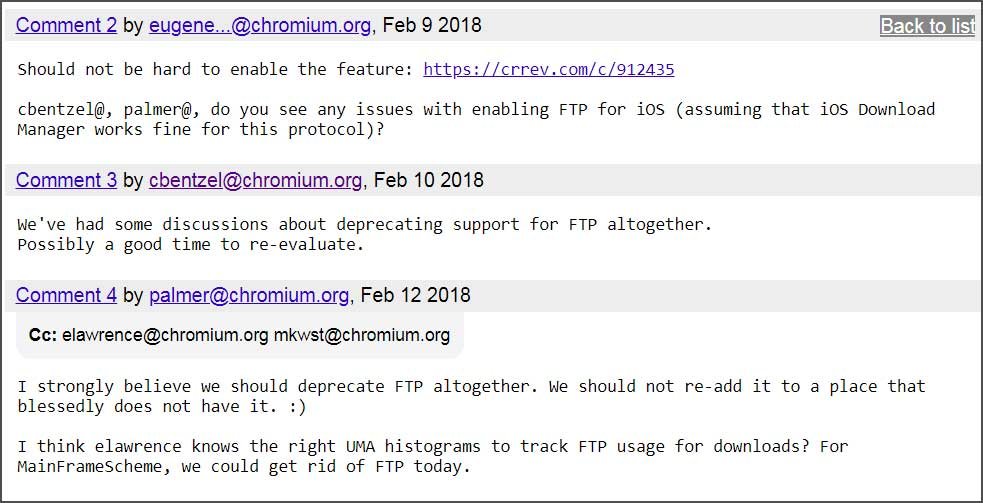Google devs has clearly indicated in a sequence of bug articles produced over the years that they prefer to get rid of the FTP protocol rather than promote it. This resulted to a slow chipping of characteristics until the FTP protocol did not remain much.
Discussion about removing FTP from Chrome In a post issued today on Chromium’s blink Dev mailing list, Google lastly announced its “Intent to Remove” FTP from Chrome owing to its absence of use and support for file transfer over encrypted connections. “The current FTP implementation in Google Chrome has no support for encrypted connections (FTPS), nor proxies. Usage of FTP in the browser is sufficiently low that it is no longer viable to invest in improving the existing FTP client. In addition more capable FTP clients are available on all affected platforms.” It’s time to lastly remove from your browser what’s left of the FTP protocol. “Remaining capabilities of Google Chrome’s FTP implementation are restricted to either displaying a directory listing or downloading a resource over unencrypted connections. We would like to deprecate and remove this remaining functionality rather than maintain an insecure FTP implementation.” While the Intent to Retire was just released tonight, Google’s Justin Tervay developer is already working hard to implement the changes needed to disable FTP in Chrome and measure the impact of the change. For instance, We discovered that two opened Chrome Gerrit instances include FTP extraction code. One uses a fresh flag to default FTP configuration.
Disable FTP by default Another post from Gerrit provides fresh monitoring so as to determine how many applications this change affects.
Tracking FTP requests FTP is presently scheduled to be deactivated for Chrome 80 in stable variants, with FTP associated code and assets being ultimately removed in Chrome 82.


![]()